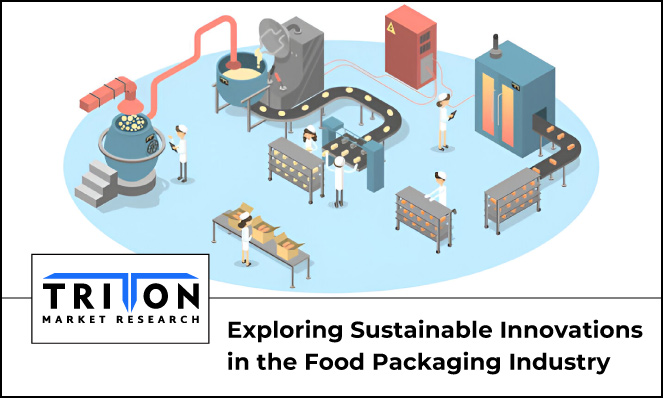



22, July 2024

A critical aspect of food and beverage industry is packaging, which plays a significant role in preserving the quality and extending the shelf life of food products. Currently, sustainable food packaging is gaining considerable attention due to growing environmental concerns. Innovations in this area focus on reducing waste and using eco-friendly materials, such as biodegradable plastics and edible packaging, to minimize the industry's ecological footprint.
Following this trend, Tetra Pak, a global leader in food packaging and processing, has set ambitious targets to reduce carbon emissions. By 2030, they aim to reduce scope 1 and 2 emissions by 42%. Their internal strategy, supported by staff and customers, focuses on sustainability and innovation, driving reputation and engagement.
In fact, a 2024 study by UNCTAD and the World Health Organization (WHO) states that the global trade in food expanded by 350% from 2000 to 2021, reaching a total value of $1.7 trillion. Developed economies import a higher share of processed foods, which make up about 48% of their total food imports. This indicates a significant reliance on processed foods, emphasizing the need for sustainable and innovative packaging solutions.
Sustainable food packaging has immense potential due to the use of key food packaging materials like plastics, paper, and metals. Hence, eco-friendly packaging options, such as biodegradable plastics, recycled paper, and compostable materials made from plant-based sources like cornstarch, are gaining traction. For instance, polylactic acid (PLA), a biodegradable polymer derived from renewable resources, is becoming popular due to its minimal environmental footprint.
Such sustainable packaging materials also comply with stringent FDA regulations on food packaging, which ensure the safety and effectiveness of food packaging. The FDA guidelines and the global food packaging regulations emphasize reducing waste and promoting recycling. In this regard, the EU's packaging waste directive encourages using recycled materials and sets targets for recycling rates.
Let us explore how innovative materials in food packaging, such as edible coatings for fruits and vegetables, are transforming the industry by addressing environmental concerns.
Edible packaging, which uses materials like seaweed and rice paper, offers a waste-free solution as it can be consumed along with the food.
Plant-based packaging minimizes reliance on fossil fuels and lowers the carbon footprint.
Compostable packaging breaks down into organic matter and supports composting efforts and soil enrichment.
Recycled packaging materials contribute to a circular economy by reducing the need for virgin resources.
Upcycled materials repurposed from food industry by-products offer innovative uses for waste products, such as turning fruit peels into packaging film.
Smart packaging technology includes intelligent packaging, which uses sensors and indicators to monitor the condition of the food. For example, QR codes, Near Field Communication (NFC), and Augmented Reality (AR) experiences enable consumers to access detailed product information and traceability by scanning the package with their smartphones.
Active packaging plays a crucial role in extending the shelf life of food products. It includes oxygen scavengers that remove oxygen¬¬ from the packaging environment, preventing oxidation and spoilage. Moisture absorbers help maintain optimal humidity levels, while antimicrobial packaging incorporates agents that inhibit the growth of harmful bacteria. Time-Temperature Indicators (TTIs) are another innovation that visually shows if the product has been exposed to unfavorable temperatures during storage and transport.
Nestle has made significant advancements in sustainable packaging, particularly in the Asia Pacific region. Recently, the company initiated a pilot project in Australia, introducing paper packaging for its chocolate products to reduce plastic usage and promote sustainability. The trial aims to evaluate the suitability of paper packaging in the region's hot and humid climate.
Furthermore, this initiative follows successful implementations in colder climates, such as Europe and the US. The Australian pilot for the KitKat four-finger 45g pack represents a crucial step towards achieving Nestle's plastic reduction goals.
Technology is at the forefront of packaging innovations, transforming the food industry in remarkable ways. For instance, nanoparticles can be incorporated into packaging materials to prevent oxygen and moisture infiltration, significantly reducing spoilage and extending product freshness. This leads to longer shelf life and improved food safety. 3D printing in packaging also allows for precise manufacturing of complex shapes, which can be tailored to specific food products, ensuring better protection and less material usage.
Similarly, blockchain in packaging ensures supply chain transparency and packaging traceability. By leveraging blockchain, companies can provide consumers with detailed information about the origin, processing, and journey of their food products. This enhances trust and allows for real-time tracking of food items, ensuring authenticity and safety. Evidently, the integration of advanced technologies in packaging is driving efficiency, sustainability, and transparency in the food packaging industry.

Prevalent cases of terrorist attacks in today’s world is increasing the need for severe standards of security for public safety, and the global market for biometric technology scrupulously accommoda..
Prevalent cases of terrorist attacks in today’s world is increasing the need for..